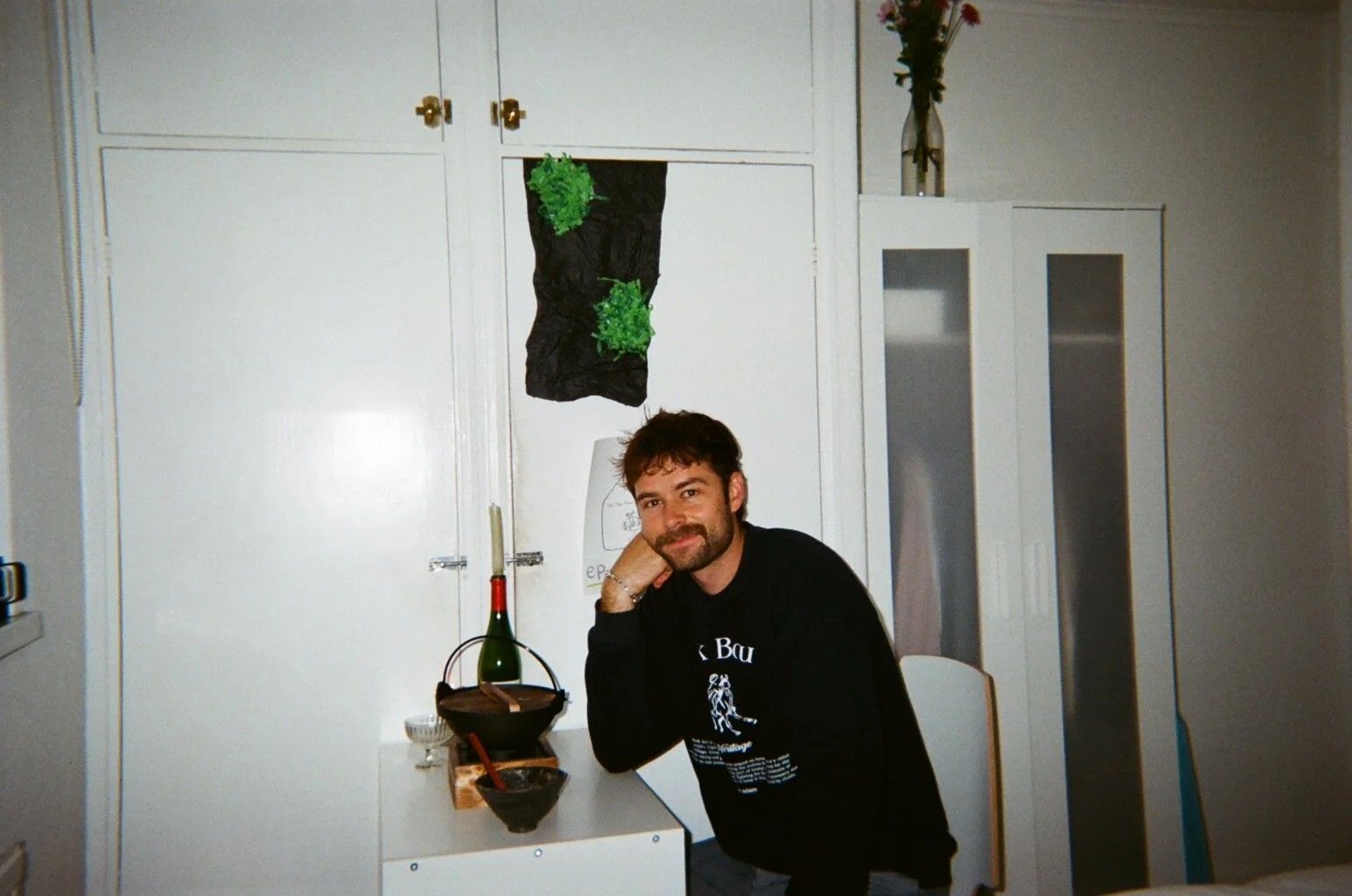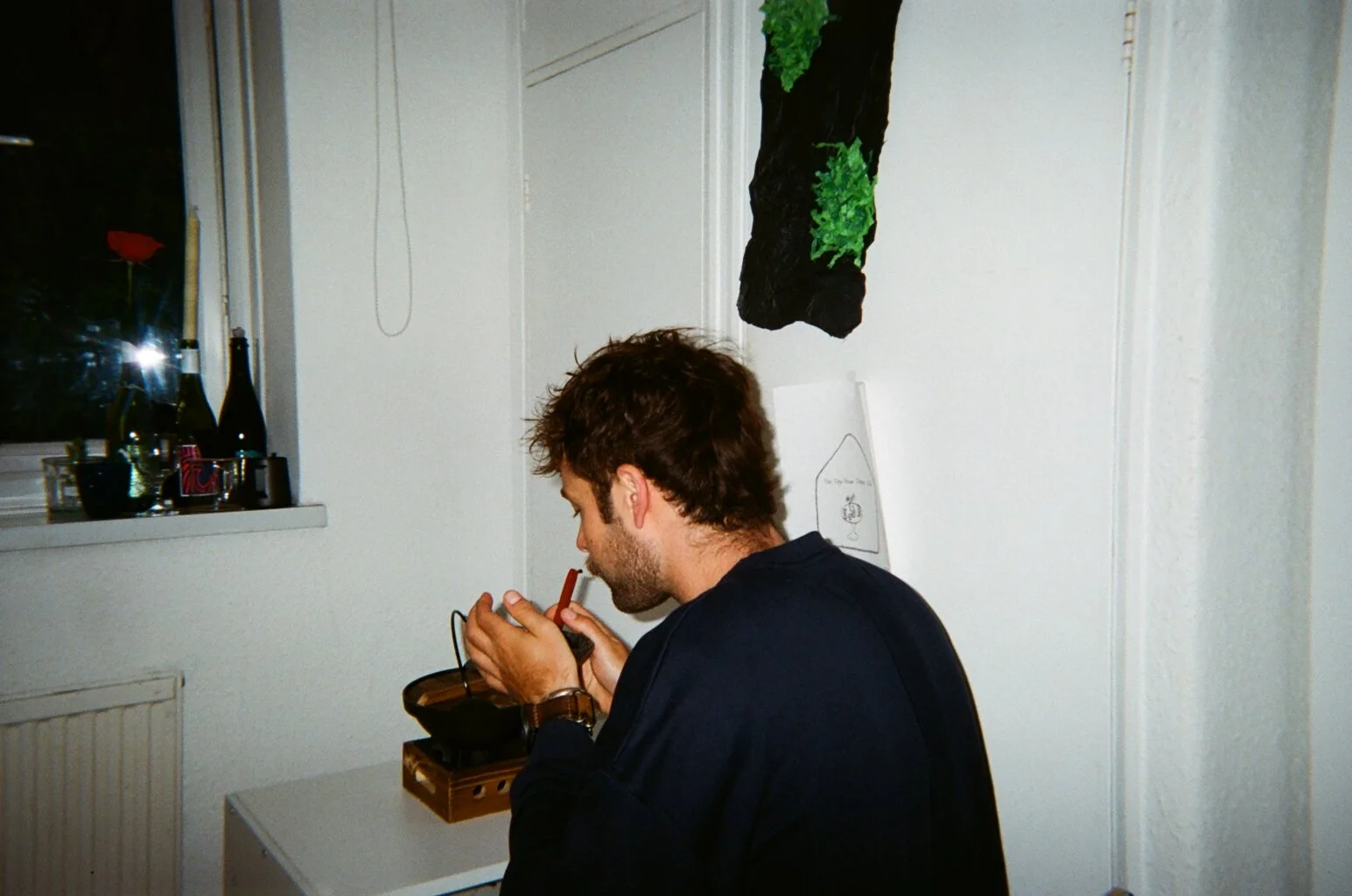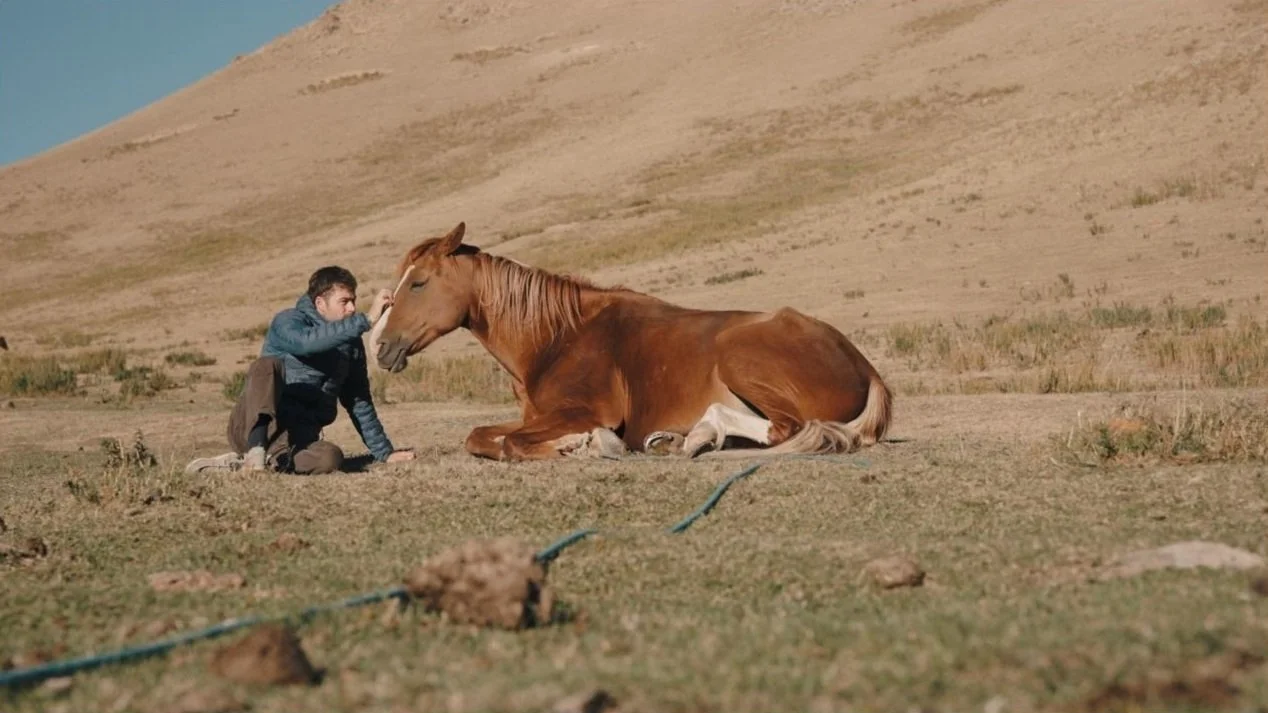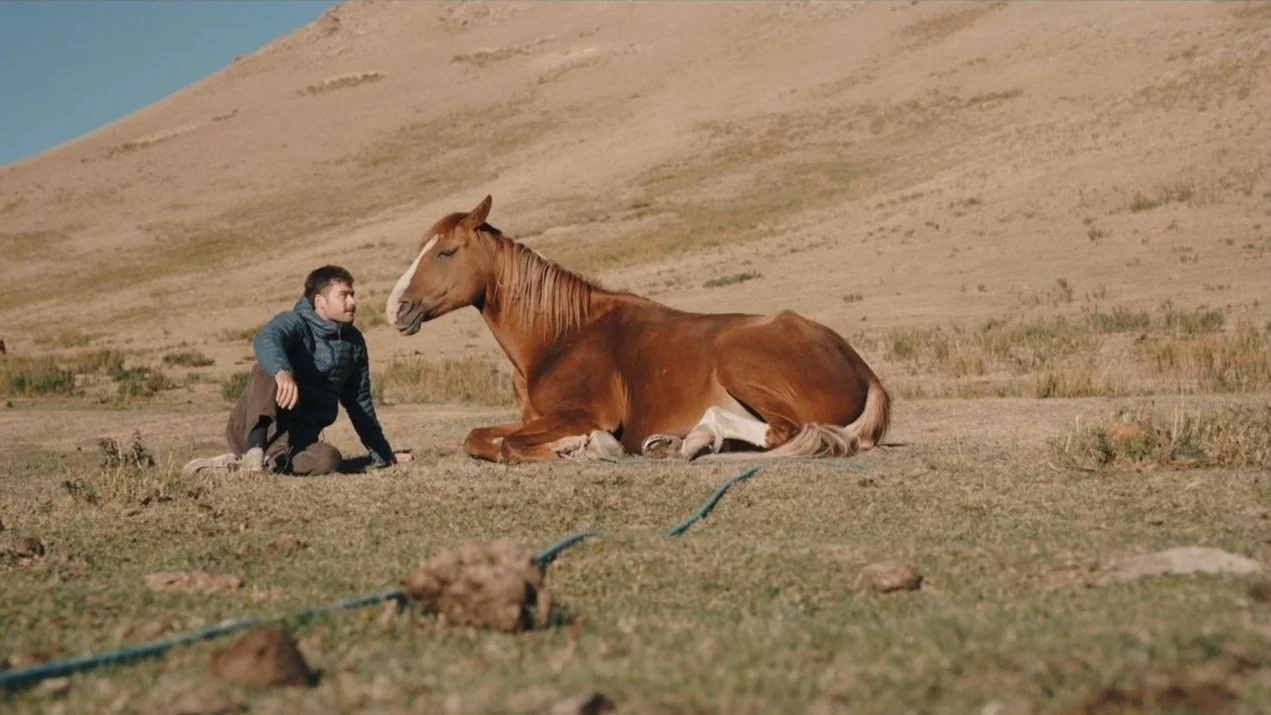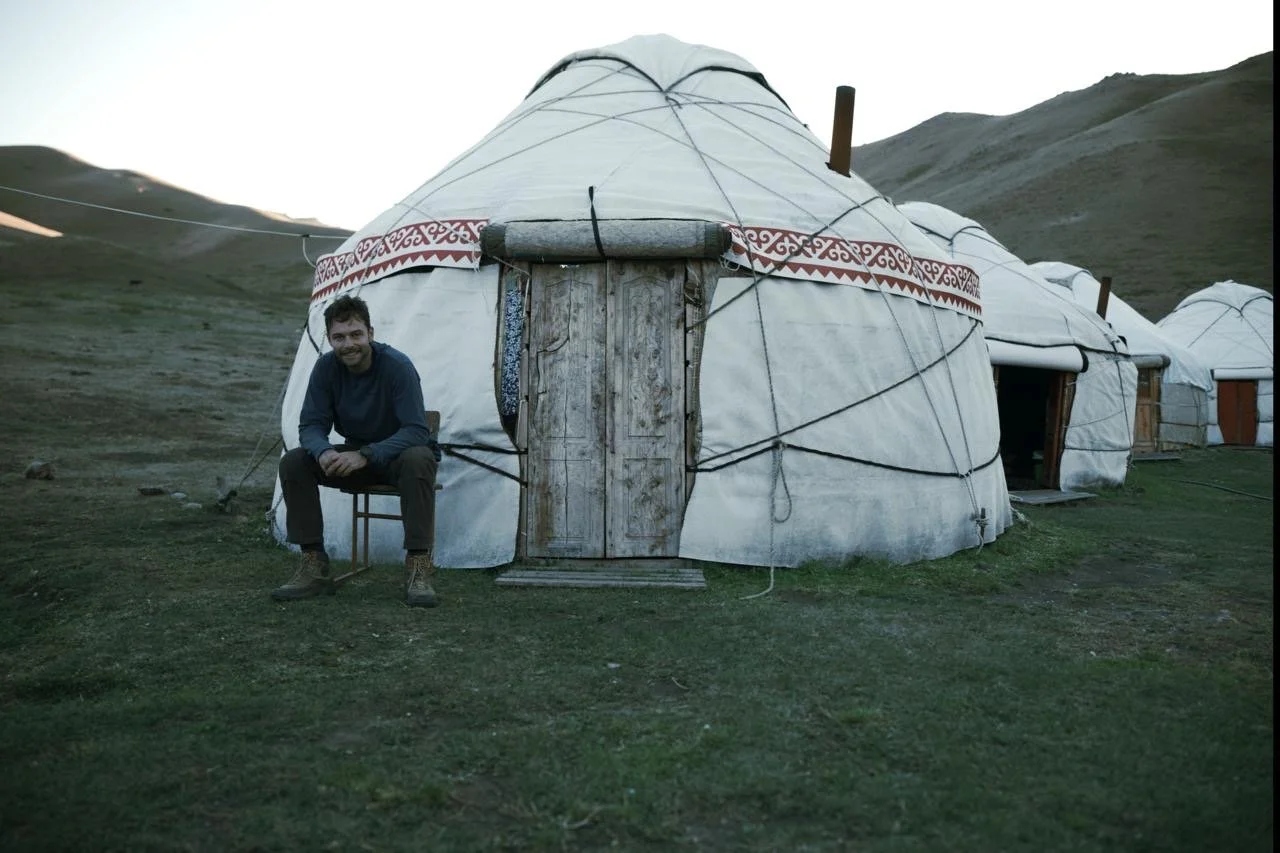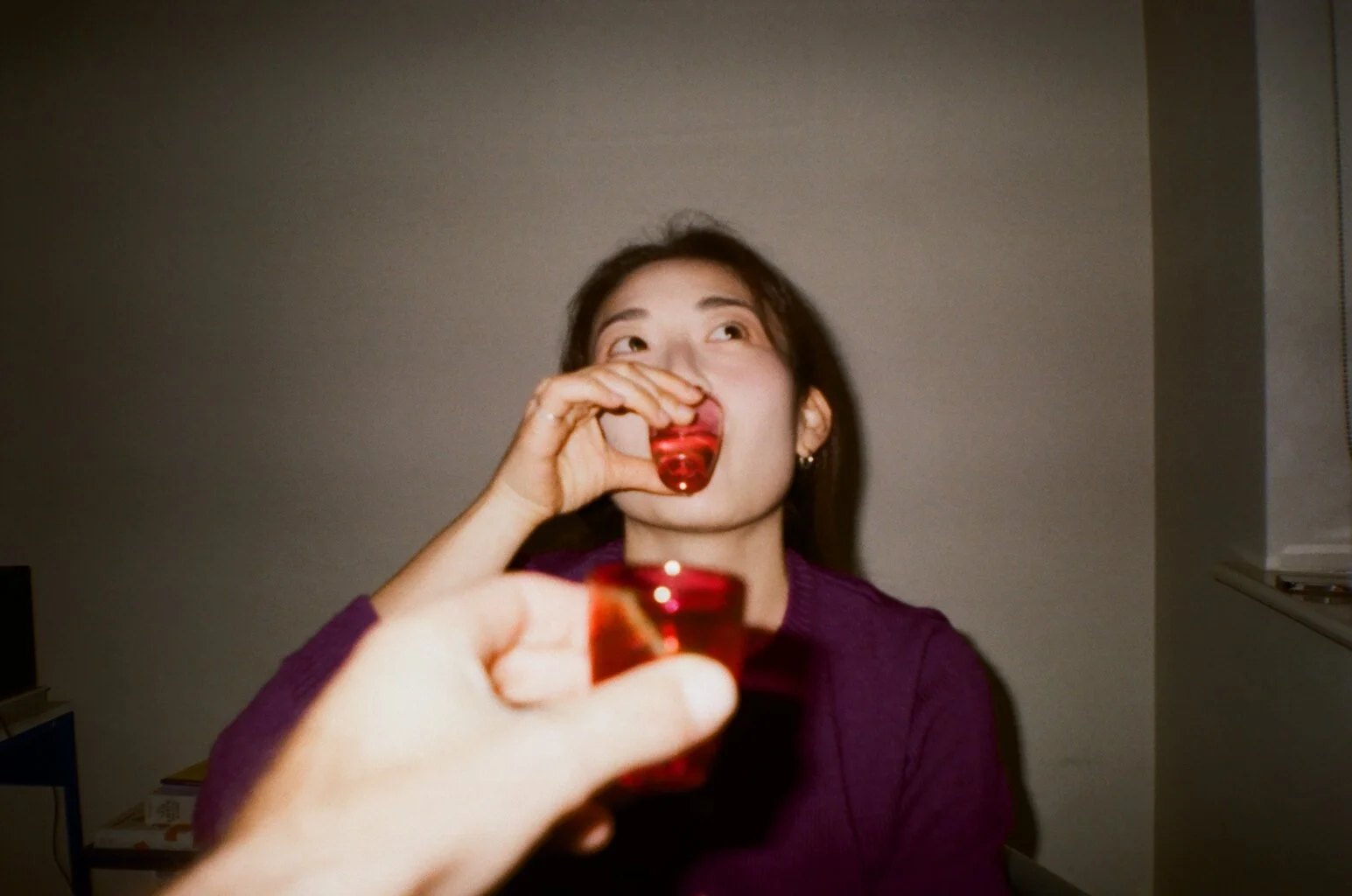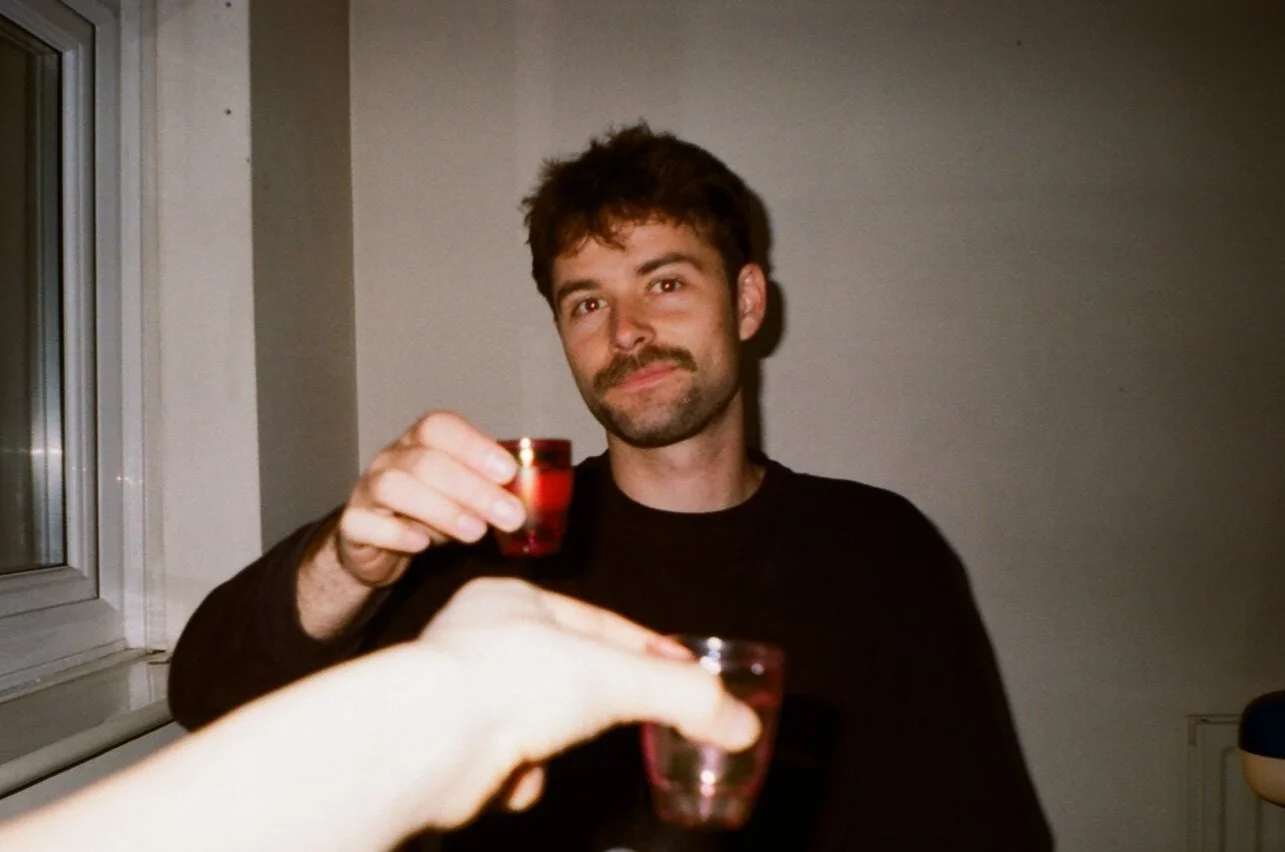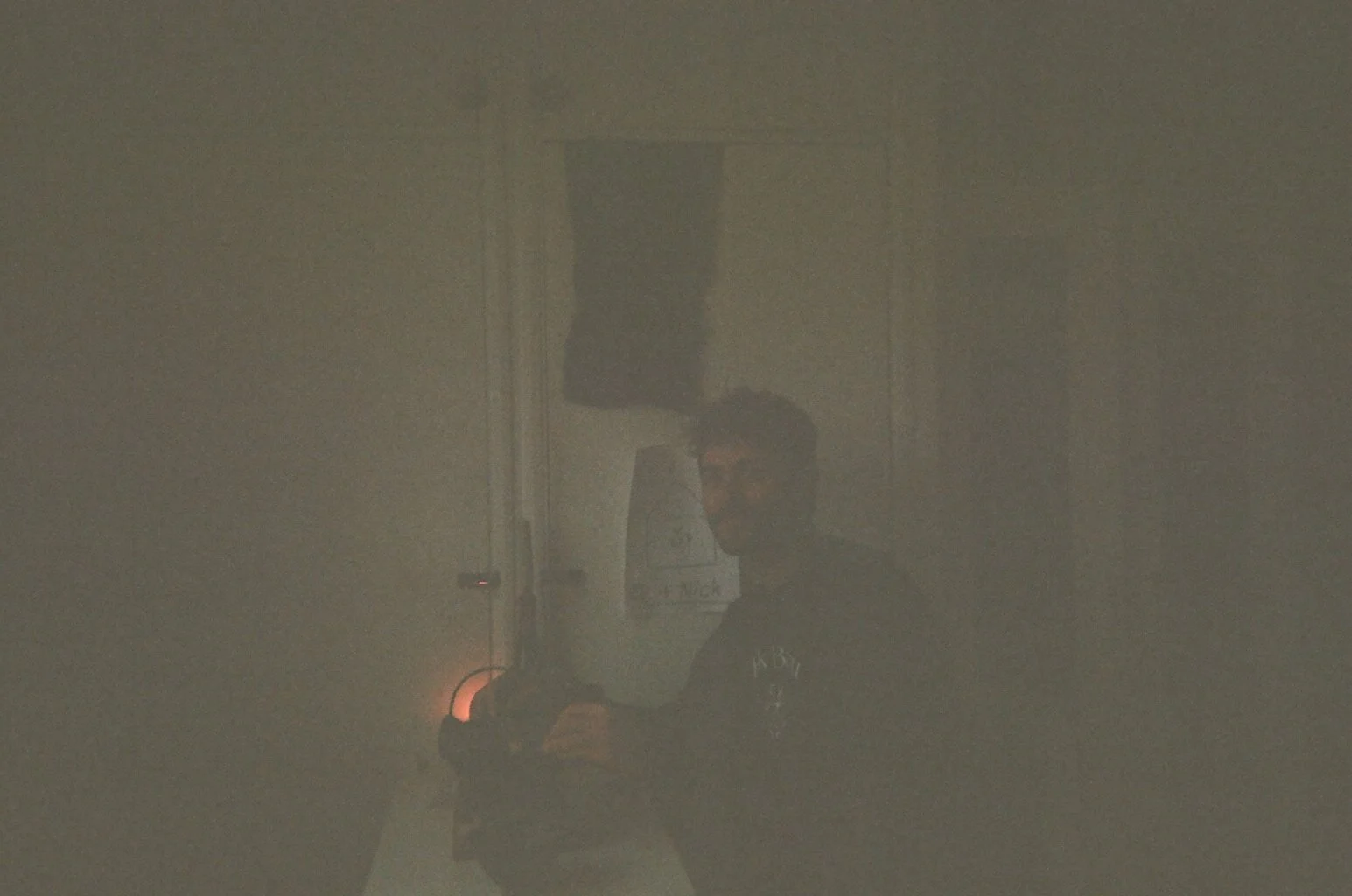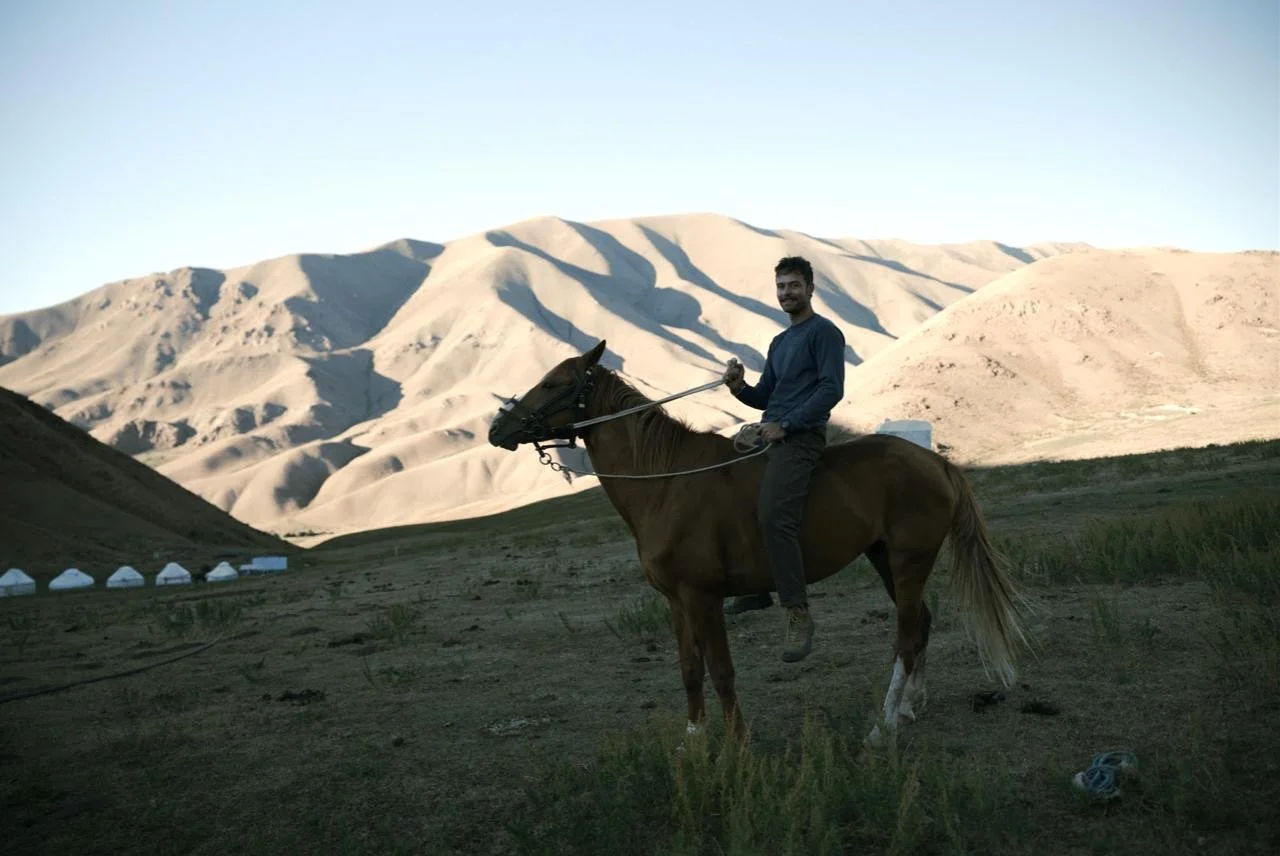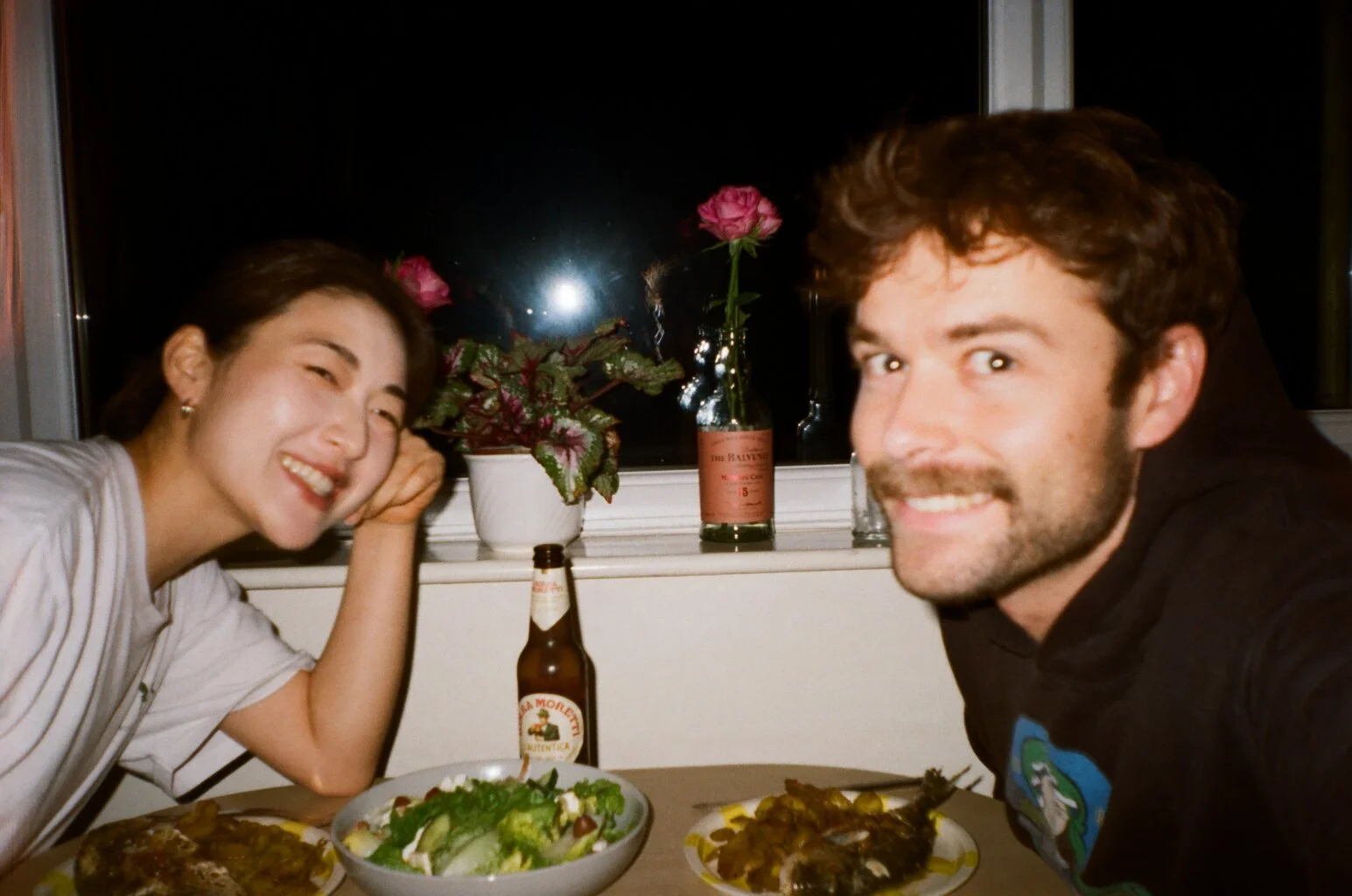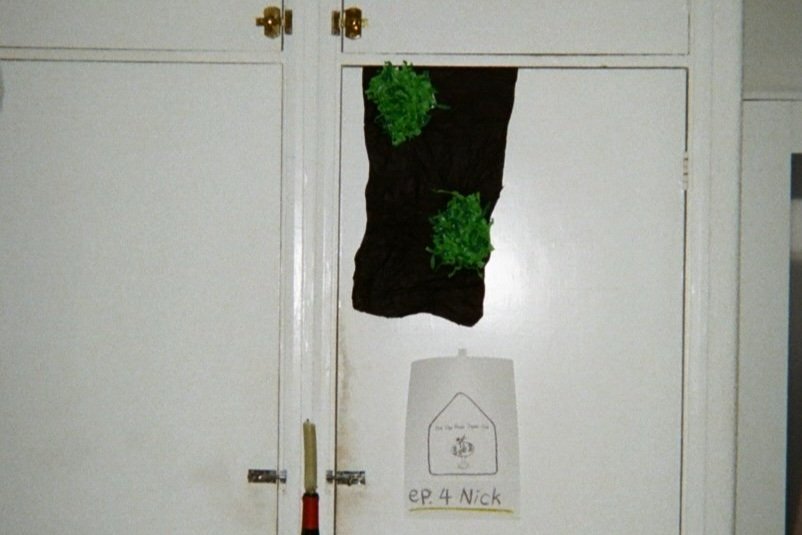
Ep.4 Nick
16 august, 2024
Before the dinner・・・
When I thought of Nick, these keywords came to mind:
Sensitive – Delicate – Keen Eye
Driven – Passionate – Success
Warm – Friendly
Adventurer, Explorer
Barren, Abandoned – War – Soldiers
Storyteller – Stories Behind
Nick is a natural storyteller. When I reflect on his body of work, particularly his documentary projects, I see a consistent theme: he places himself in completely remote or unfamiliar settings, immersing himself deeply into the lives of the locals there. He listens to their stories, uncovers hidden gems, or highlights unheard issues that need to be discussed, and brings them to light.
In this sense, I see Nick’s work as akin to moss growing on stone. He illuminates the unseen, embedding himself in places where light doesn’t naturally reach. To me, he feels like vibrant moss covering an otherwise gray, lifeless stone—breathing color and life into something muted.
Additionally, knowing that Nick grew up in close proximity to nature and continues to strive for a life that remains close to it, I wanted to transform my room into a space that felt calm, spatially serene, and reminiscent of being in a quiet forest.
For the menu, I wanted to focus on food with a story—dishes that carry history and meaning. I believed that Nick, as a storyteller himself, would especially enjoy an experience where he could understand history and culture through the narrative behind the food.
That’s when Budae-jjigae (부대찌개), often called "Army Base Stew," came to mind.
Budae-jjigae is a beloved Korean dish with roots in the Korean War of the 1950s.
Nick’s interest in themes like soldiers, war, and survival made Budae-jjigae the perfect choice for his supper club experience. The dish also incorporates ingredients he enjoys, making it a natural fit for his palate.
As I thought about what to pair with Budae-jjigae, I realized it was a great opportunity to introduce Nick to two essential pillars of Korean dining culture: rice (밥) and banchan (반찬).
When you prepare and share Budae-jjigae, you’re not just serving a meal—you’re sharing a piece of Korean history, a story of hardship, adaptation, and resilience.
-
Post-Korean War Era: After the Korean War (1950–1953), South Korea faced severe food shortages. During this time, many Koreans living near U.S. military bases had limited access to traditional Korean ingredients but found surplus American processed foods such as Spam, hot dogs, and baked beans provided by the U.S. military.
Creation of Budae-jjigae: To make use of these new ingredients, people began blending them with Korean staples like gochujang (red chili paste), kimchi, and garlic. The result was a fusion dish that represented both Korean ingenuity and the influence of American food culture.
-
From Necessity to Nostalgia: What began as a necessity-driven dish born out of scarcity has evolved into a comfort food beloved by many. Budae-jjigae embodies a significant chapter of Korea’s modern history, symbolizing resilience and creativity in hard times.
Today’s Varieties: While the original versions featured Spam, hot dogs, and canned beans, today’s Budae-jjigae includes instant ramen noodles, tofu, rice cakes, and various vegetables. It’s a dish enjoyed across generations in Korea.
-
Banchan refers to the variety of small side dishes that accompany a Korean meal. These can range from simple seasoned vegetables to more elaborate options like kimchi (fermented vegetables), jeon (savory pancakes), or japchae (stir-fried glass noodles). Typically, multiple banchan dishes are served together, offering a range of flavors, textures, and colors.
Unlike Western meals where side dishes are often individual portions, banchan is served communally. This reflects the family-oriented and communal nature of Korean dining culture.
With all these elements coming together, a custom menu for Nick was born—one steeped in story, culture, and shared experience.
●
●
●
Eat & Drink・・・
Budae-Jjigae
gaji sot bap
Banchan trio
1. gyeran-mari
2. sigeumchi-namul
3. kimchi-bokkeum
Lobban El Gordito 2017
army base stew
eggplant stone pot rice
three kinds of side dishes
Jumilla, Spain
talk・・・
As mentioned earlier, every time I have a conversation with Nick, I’m completely captivated by the stories he shares, so I asked him about his secret. Nick said that his secret, if you can call it that, is to "try to keep using the muscle to tell stories."
In fact, Nick’s storytelling isn't just impressive in terms of technique—it’s fundamentally the power of the stories themselves that makes them so compelling. His stories come from experiences and challenges that most people have never attempted or wouldn't dare to, making the narratives born from these trials and results incredibly powerful.
His decision to go to Kyrgyzstan stemmed from an interest in nomads. I remember that while searching for examples of nomadic life still existing in modern society, he discovered Kyrgyzstan. I was curious to see how his project would develop after actually experiencing it firsthand.
He planned to document the lives of nomads in Kyrgyzstan by riding horses and crossing mountain ranges. To do that, he needed a horse, and his first mission upon arriving in Kyrgyzstan was to find one. Nick bought a horse at an animal market, and named it "Ratmir," which means "Defender of Peace." Thus began the journey of Nick and Ratmir.
His most recent documentary work was done in Kyrgyzstan, a country with a name that even many are unfamiliar with. Nick visited Kyrgyzstan twice in 2024: once for a month from May to June and again for another month from August to September. In total, he spent two months literally surviving in Kyrgyzstan.
Their exploration, relying on Google Maps and paper maps printed just in case, seemed like an incredibly bold and reckless adventure that I could hardly imagine. I asked Nick how he was able to navigate all the "firsts" in Kyrgyzstan, a place where everything was new and unfamiliar.
“So whilst I was traveling, I had no real route, I gathered waypoints and planned stops, but there were no reliable paths. I followed animal and shepherd tracks, learning to distinguish between them. You rely on your interpretation of the terrain—the altitude, the mountains, the lakes—and use those cues to find your way, like knowing there’s a yurt camp down in a valley based on its distance from water or a lake.”
Nick described how, in a place without predefined routes or reliable paths, he had to rely on his instincts and sensory interpretation to navigate. Although humans inherently have these survival senses, Nick highlighted that they can become dull over time. Traveling in such an environment required him to “warm up” and reactivate these abilities. Initially, this adjustment period feels disorienting, but it becomes the foundation for finding rhythm and harmony with the unfamiliar environment.
Nick discussed how he gradually sharpened his dulled senses. At first, he struggled to trust his judgment and felt stressed about uncertainties, such as whether he could descend a hill or find another person. By allowing himself to make mistakes—getting lost, panicking, and struggling—he relearned to interpret his surroundings and trust his instincts. Once he became attuned to the rhythms of the environment which he poetically describes as “moving with Kyrgyzstan's tides or winds”, his perspective shifted. He could navigate more effortlessly and feel connected to the land.
Nick's first trip to Kyrgyzstan was a struggle against the unknown. Without understanding the natural flow of things—be it the wind, terrain, or cultural nuances—he found himself "fighting the system" at every turn. By his second journey, however, experience had taught him the "cheat codes" of travel in this environment. He packed lighter, brought only what was necessary, and found a better balance with his horse, making the journey smoother. Importantly, he also embraced the nomadic way of relying on others for help, food, and shelter. What initially seemed like a vulnerability—depending on strangers—became a natural and practical part of the journey, aligning him with the rhythm of life in Kyrgyzstan.
I found the culture of willingly offering food and shelter to strangers incredibly fascinating, and Nick shared his thoughts on what he found to be the most striking aspect of his experiences and discoveries: Kyrgyz hospitality, which forms a core part of Kyrgyzstan's identity.
"When we talk about the Kyrgyz and their spirit of hospitality, my observation is that it revolves around two key concepts: kindness and survival. These insights are based on my personal experiences, observations, and conversations with local people—including influential figures like the country's Head of Tourism, the founder& the CEO of Community Based Tourism which is an organization in Kyrgyzstan.”
"From my own experience, I wouldn’t have been able to survive my journey without the kindness of strangers I met along the way. More than that, I wouldn’t have even embarked on the trip had I not known I could depend on this hospitality. It was a significant part of my sense of security. As a foreigner—a complete stranger to this land—I realized that kindness and hospitality are not just cultural practices; they are intrinsic elements of what it means to be Kyrgyz.”
Nick elaborated further, delving into the deep historical and cultural roots of Kyrgyz hospitality. Historically, the Kyrgyz people lived a largely nomadic lifestyle, moving seasonally between pastures, known as jailoos, in search of fresh grazing land for their livestock. This way of life necessitated a strong sense of interdependence and survival. Unlike farmers who remain rooted to a single plot of land, nomads were constantly on the move, adapting to the rhythms of the land and the seasons. Overgrazing had to be carefully avoided, and the daily task of moving herds often consumed the entire day. In winter, the challenge of survival heightened as high-altitude regions grew cold and barren, forcing families to make tough decisions—sell their livestock at a loss or migrate to lower altitudes with their animals, yurts, and families in tow.
In such harsh conditions, hospitality became an essential element of survival. As Nick observed, travelers depended on the kindness of strangers for food, shelter, and warmth. Families welcomed nomads into their yurts, providing basic necessities like fire, water, and protection—an unspoken social contract rooted in mutual survival. This practice, while practical, also carried cultural and social significance. Hosting strangers not only offered an opportunity to exchange news but also reinforced connections between distant communities. It even played a role in expanding family ties, as hospitable families were more likely to attract marriage proposals for their children.
For Nick, this blend of survival and kindness offered a profound lesson. "It's hard to be hospitable and unkind at the same time," he reflected. To him, hospitality was more than a necessity—it was a defining aspect of Kyrgyz identity. Welcoming strangers into one’s home, especially in such a challenging environment, requires genuine compassion. "Your capacity to be kind," he emphasized, "is directly linked to your capacity to be Kyrgyz." This realization left a lasting impression on him, as he had never before encountered a place where kindness was exchanged so abundantly and woven so deeply into the fabric of life.
I was deeply impressed by how Nick was able to draw such insightful connections between survival, hospitality, and identity in Kyrgyz culture. Through his experiences, he uncovered how the Kyrgyz, shaped by their nomadic heritage and environmental challenges, have built a culture rooted in kindness and mutual support. What struck me even more was that his insights came from immersing himself in the local community—something a short-term tourist could never fully grasp.
Nick shared how, in his travels through Kyrgyzstan, he made a conscious effort not to be treated as a tourist but to integrate into the local community. At first, being treated as a guest often meant a "show" of hospitality—yurts set aside for tourists, a performance of Kyrgyz life that didn’t reflect the nomads' everyday reality. But as his journey progressed, things began to shift. What started with simple gestures—like being offered a yurt to sleep in or receiving meals without being allowed to pay—evolved into deeper connections.
Nick noticed this change when local families began treating him as one of their own, offering tasks like herding animals or inviting him to stay for longer visits. This shift, he believes, was due to his growing understanding of local customs, which allowed him to blend in and be treated as a local. The transformation marked a significant change in Nick’s experience. In his words, he went from being a "lone rider" to being treated as someone local, navigating the Kyrgyz landscape not just physically, but culturally. It was this immersion—being accepted as part of the community—that provided him with a richer, more authentic experience of Kyrgyzstan.
And Nick added something really important.
“But getting there took time. I consider myself one of the few people I know who truly understands the value of time and hard work. The process of being treated as a local, rather than a tourist, is not something tangible—it's not like I can pin it on my chest or post about it on Instagram. The effort that went into that transformation can’t easily be shown to anyone either. But at its core, it's about respecting time. It's understanding that this kind of change doesn’t happen overnight—it takes time to learn and to experience. I didn’t skip any part of that process. I didn’t take shortcuts, like watching a YouTube crash course on how to blend in as a local in Kyrgyzstan. When you unlock this understanding, in both your heart and mind, it becomes incredibly rewarding because you start respecting your own work. And the result you achieve may seem abstract but they're also not. Because they're very, very real.”
Nick shared his thoughts on dedicating his life to a practice that respects time, particularly working with people and understanding their relationships through the passage of time. He struggled in the past to find a singular craft to commit to, but realized that his true craft is "sculpting in time," a concept inspired by Andrei Tarkovsky’s book Sculpting in Time. For Nick, this idea represents more than just a passage of time—it’s about shaping and understanding it, using it to perceive life and relationships more deeply.
Nick emphasized that time is not just a finite resource, but a tool for perception. By becoming more conscious of how we spend our time, we can appreciate the value of experiences more fully. For instance, he reflected on his time spent in Kyrgyzstan, suggesting that understanding the worth of time there could make him want to spend even more time in similar places.
I responded to Nick by reflecting on his previous projects in Georgia, Ukraine, and Kyrgyzstan. These projects, though seemingly separate, were all aligned with Nick’s deeper goal: to spend time understanding people and cultures in a way that mirrors the concept of sculpting in time. The fundamental purpose was to immerse himself in these places, not just as an outsider, but as someone who sought to understand life through the lens of time.
As our conversation continued, I shared my thoughts with Nick, telling him,
“I think you’re more like a storyteller than a filmmaker. I mean, film is just a medium that you use to document—you just chose filmmaking as your tool to archive your time. But more importantly, what you’re collecting are stories and people.”
Nick agreed with this perspective, saying,
“Yes, that’s a great way of putting it. And I guess that defines what kind of filmmaker I am, which is a storyteller. Nick Sherlock, storyteller.”
This simple exchange highlighted how deeply storytelling is embedded in Nick’s work. It’s not just about capturing images or compiling footage—it’s about preserving the essence of the people, places, and experiences he encounters. His craft is not confined to the technicalities of filmmaking; it’s a practice of collecting moments and narratives that reflect his respect for time and connection.
We went back to talking about his trip to Kyrgyzstan, I asked Nick why his film project in Kyrgyzstan shifted focus from nomadic culture to tourism. I remembered how, before his first trip, he was deeply curious about nomads and their way of life. However, by his second trip, he had started telling me that his film would center on tourism. I wanted to understand what led to this change.
Nick explained that while nomadism was a fascinating topic, it was too broad to tackle comprehensively. Instead, he decided to narrow his angle to examine the intersection of tourism and the nomadic lifestyle. Nick highlighted that nomads are deeply hospitable by nature, and tourism capitalizes on this unique aspect of their culture. His film aims to explore both the positive and negative impacts tourism has on Kyrgyz nomads—how it reshapes their identity while also having the potential to harm their way of life and environment. He wanted to provide a balanced portrayal, showcasing how the spirit of hospitality interacts with the pressures of tourism.
However, Nick also discovered that audiences were often more interested in his personal journey than the academic aspects of his project. He shared how the film became partly about his experiences—like learning to ride a horse or navigating the challenges of daily life in Kyrgyzstan. But in the conversation that followed, I was able to understand and see why the focus of the documentary gradually shifted to Nick's personal experience.
Nick shared a deeper realization about why he was drawn to Kyrgyzstan in the first place, something he only understood after completing his trips. He described how the intense physical and emotional challenges of his time there pushed him into “survival mode,” a state his therapist later helped him unpack. While he wasn’t deliberately seeking survival mode itself, he recognized that he was searching for something often found in such high-intensity, remote, and foreign environments—a sense of solitude, stoicism, and connection to something profound.
He connected this pursuit to a scene in Tarkovsky’s Stalker, where a specific place ties the film’s narrative together, representing a deeper spiritual or existential truth. For Nick, the landscapes and challenges of Kyrgyzstan felt like the closest he had come to finding such a place in reality—a place that offers insight into life’s meaning. He explained that it wasn’t simply beauty he was searching for, but a kind of beauty that transcends aesthetics, one that brings you closer to understanding life’s essence. This type of beauty, he noted, isn’t something that can be stumbled upon easily; it requires an intentional and often grueling search in the most unexpected or difficult places.
Nick described the feeling as being “on the edge” of discovering some element of life’s truth—a truth that you know exists but remains elusive until you immerse yourself fully in the process. For him, Kyrgyzstan and its harsh, high-intensity environments became the ideal backdrop for this search. It wasn’t just about surviving the experience, but about using that intensity to get closer to what he was truly chasing: meaning, truth, and a beauty that connects you to the core of existence.
Nick raised his camera to the world in search of life’s meaning. He began by capturing the lives of Kyrgyz nomads—people uninterested in accumulating wealth, content instead with just enough food to get through the day and shelter from the harsh weather. They lived in harmony with nature rather than exploiting it, embracing a life of simplicity and quiet resilience.
And through our conversation, I could see his transformed perspective on life.
Sol.
"I think apart from the footage you shot in Kyrgyzstan, your attitude toward life changed a lot. Like you told me, 'Sol, we don’t need much to live a happy life,' and then you started talking about the importance of community, having neighbors, and just living a very simple routine. You were like, 'Sol, I spent my whole morning feeding Ratmir, combing his hair, and massaging his legs.' You started saying these little things, tiny things that can make your day."
Nick.
"They just make your day, that’s the thing. Days are made up of little things.”
But Nick didn’t just find simplicity and beauty in the lives of others. He also faced solitude, completely isolated from the world, relying only on himself. As much as his camera captured the lives of those around him, it eventually began to turn inward. Nick's search for meaning through these experiences became not just an exploration of others, but a journey to discover himself. Reflecting on this, it’s clear that his decision to head to Kyrgyzstan was not only about capturing nomadic life but also about finding a deeper connection to himself.
Nick ended by sharing his ultimate dream—to create a film that could inspire millions and help people understand the profound beauty and meaning of life. “I believe you can condense life’s meaning into 120 minutes of film,” he said, envisioning a piece that communicates universal truths in an accessible, yet deeply moving way. Unlike the dense complexity of Tarkovsky’s work, Nick aspires to craft something simpler in its language, yet equally profound in its message—a film that awakens even the most indifferent viewer to the gift of life.
For Nick, this mission isn’t just a creative goal; it’s his life’s purpose. To get there, he knows it will take more time and more immersive projects like those in Kyrgyzstan, Ukraine, and Georgia—each step bringing him closer to understanding, and ultimately sharing, life’s meaning.
Nick is currently in the editing process of compiling footage filmed in Kyrgyzstan into a documentary film. In addition, he is sharing related content on his Instagram archive account. For those who are curious to know more, here is his account :)
After the dinner・・・
-
Dear Sol,
It’s is a great honour to have attended the tiny room supper club ep.4 Nick.
Over the summer, we’ve come to learn more about each other in ways that take time and love to learn from.
You’ve taken note and learnt a lot about me. And I feel so much love in the way you respond to each new note in your journal of Nick. You take such time to care in ways that make me feel loved.
One day, you would have learnt so much about me, that you’ll start to know me in ways better than I’d know myself. You’ll know what I’d prefer to eat before I’ve made my decision. You’ll know how I’ll respond before you’ve even asked the question. It is in these moments, of unsurprising behaviour, that we may finally know each other, for all our worst and our best. And it will be in these moments, that I’ll know your love well enough to understand, that even though I may not be able to offer you any new notes, you love me just the same, as I know you do now. For I love you too, Sol.
Nick, August 2024
-
Dear Nick,
At last, I am able to share with the world the conversations we had over the past summer and fall.
As I looked back on our talks, I was in awe of how you faced all those "firsts" completely on your own.
But the more I listened to your story, the more I realized—there were so many moments of crisis where, had you not encountered those precious connections, things could have been incredibly dangerous. If it weren’t for the Kyrgyz people who extended a helping hand without hesitation, your time in Kyrgyzstan might not have been remembered so beautifully. So, I want to take this opportunity to express my gratitude to those in Kyrgyzstan who selflessly reached out to help you.
A heartfelt thank you to Aijan, Askal, and the many others who opened their hearts and shared their kindness with you with such sincerity and warmth.
Hearing about the hospitality of the Kyrgyz people made me reflect on the increasingly fragile connections and sense of community in the world we live in today. It was a meaningful reminder—especially because it aligns with the values I want to hold onto and continue building, starting with The Tiny Room Supper Club.
I remember the conversation we had with my dad on New Year’s Eve. He told me that while we often believe we are searching for a predetermined purpose or meaning in life, he sees it differently—we don’t find our purpose; we create it. In our conversations, you spoke about "searching" for meaning, but when you described what you’ve done and what you aspire to do as "sculpting in time," I realized you were already in the process of shaping the meaning of your own life. Perhaps we could call it sculpting life’s meanings?
The biggest reason I respect you is that everything you've done—every project—was initiated purely by your own will, not because someone told you to. And in the end, you made it happen. Our lives are ultimately what we create them to be, and being by your side as your partner constantly reminds me that I am the owner of my own life. I am so grateful for that.
Nick, your story is alive. Being beside you and drawing inspiration from your journey is an incredible privilege. Just as your story has moved me—body and soul—I have no doubt it will inspire many others as well.
I may not have been able to fully capture the depth of your experiences in Kyrgyzstan in this blog, but if it can serve even as a small "appetizer" to spark curiosity about the documentary film you’re working on, I would be truly happy.
I look forward to the day—soon to come—when I can immerse myself in the breathtaking landscapes of Kyrgyzstan you described with my own eyes and feel them with my own hands.
I love you.
Forever your biggest fan and partner,
Sol


